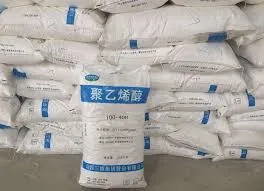Understanding Cellulose Ether Prices Factors and Trends
Cellulose ethers are versatile compounds derived from cellulose, a naturally occurring polymer found in plant cell walls. As one of the most commonly used types of functional additives in a variety of industries, cellulose ethers, including methylcellulose, hydroxypropyl methylcellulose (HPMC), and carboxymethyl cellulose (CMC), play pivotal roles in construction, food, pharmaceuticals, and personal care products. Understanding the price dynamics of cellulose ethers is essential for industries reliant on these materials.
Factors Influencing Cellulose Ether Prices
1. Raw Material Costs The primary basis for cellulose ether production is cellulose, which can be sourced from wood pulp, cotton, or other cellulose-rich plants. Fluctuations in the prices of these raw materials due to supply chain disruptions, natural disasters, or changes in agricultural yields significantly impact cellulose ether prices. For instance, a rise in wood pulp prices due to increased global demand can lead manufacturers to pass these costs onto consumers.
2. Production Costs The production of cellulose ethers involves several chemical processes, which require specific equipment and energy. Any increase in energy prices or manufacturing costs due to regulatory changes or labor shortages can lead to higher prices for cellulose ethers. Additionally, manufacturers are increasingly investing in sustainable practices, which may involve higher initial costs that will ultimately be reflected in the selling price.
3. Market Demand The demand for cellulose ethers is driven by their diverse applications. In the construction industry, for example, HPMC is utilized for enhancing the workability and durability of mortars and adhesives. Therefore, a boom in the construction sector can lead to an increased demand for cellulose ethers, subsequently driving up prices. Similarly, trends in the food industry towards natural additives can influence demand and pricing.
4. Global Trade Dynamics Many countries are involved in the production and trade of cellulose ethers, making international trade policies, tariffs, and agreements crucial to pricing. Changes in trade regulations or the imposition of tariffs can affect import/export prices, subsequently influencing local market prices for cellulose ethers.
cellulose ether price

5. Technological Advancements Innovations in production techniques and formulations can lead to new cellulose ether products that may command different price points. As manufacturers continuously seek to improve efficiency and product efficacy, technological advancements can either lower production costs (thus reducing prices) or lead to premium pricing for high-performance variants.
Current Trends in Cellulose Ether Pricing
As of late 2023, a notable trend is the increasing focus on sustainability within the cellulose ether industry. Many manufacturers are adopting eco-friendly practices or sourcing raw materials sustainably, which can affect pricing structures. While these efforts may initially raise costs, they can lead to long-term savings and stabilize prices as the market adjusts to more sustainable practices.
Additionally, with the ongoing global emphasis on health and safety, particularly in the food and pharmaceutical industries, the demand for high-quality, reliable cellulose ethers has surged. This rising demand, coupled with potential supply chain constraints, suggests that prices may remain elevated in the short to medium term.
Conclusion
In conclusion, cellulose ether prices are influenced by a complex interplay of raw material availability, production costs, market demand, global trade dynamics, and technological advancements. As industries continue to evolve and adapt, understanding these factors will be essential for businesses relying on cellulose ethers. By staying informed about pricing trends and market conditions, companies can better navigate the challenges and opportunities within this essential sector.
-
Premium Detergent Grade HPMC Hydroxypropyl Methylcellulose: Superior Thickening & StabilityNewsAug.31,2025
-
HEC 100000 Hydroxyethylcellulose for Paint | Superior ThickeningNewsAug.30,2025
-
Wall Putty Rdp Powder Packaging DesignNewsAug.29,2025
-
Introduction to Hpmc Hydroxypropyl Methyl CellulosNewsAug.29,2025
-
Hpmc Industri Grade IntegrationNewsAug.29,2025
-
How to Choose the Right Construction AdhesiveNewsAug.29,2025




